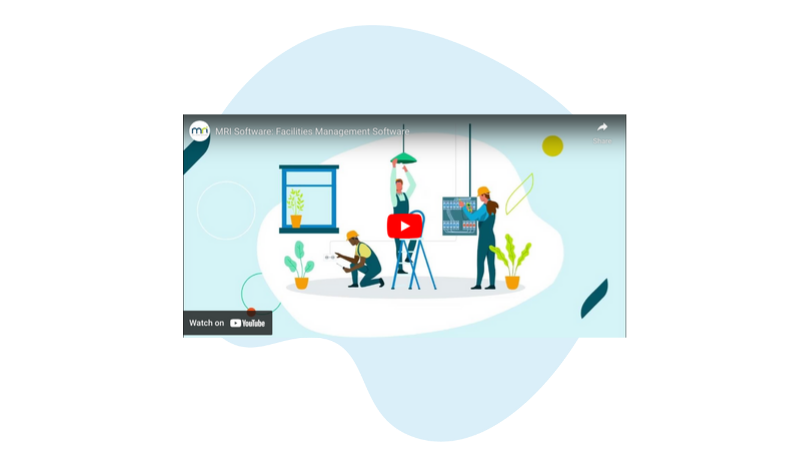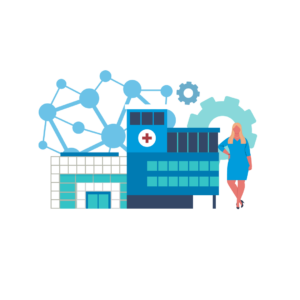How to use CAFM software: Procurement and implementation
Whenever somebody asks us how to use CAFM software, the immediate answer is that it depends. The capacity of this remarkable technology has become so vast in recent years that it can practically lend itself to any aspect of business continuity and operations.
Making the right choice
However, that flexibility and power mean that it is hard to directly answer how it is generally used – each system should be bespoke to meet the needs of its specific end-users. But, how effective it operates will depend a great deal on two factors:
- Who you choose as your vendor.
- How well you implement the software.
In this article, we’ll cover both of these considerations, meaning you can be confident of getting the most out of your CAFM software going forward.
What is CAFM software?
CAFM (Computer Aided Facilities Management) software is designed to support FM professionals and other key personnel responsible for all aspects of business continuity. This technology achieves this by streamlining FM duties and compiling the vast quantities of data contained within an organisation relating to its assets, structures and processes into one accessible, easy-to-operate program.
In this way, CAFM software has eliminated the need for reams of spreadsheets, blueprints and binders that FMs would need to keep tabs on. By storing and overseeing this information, these systems make it much more straightforward to understand how a business environment is operating, which consequently leads to:
- More efficient and proactive maintenance due to a better grasp of asset life cycles and requirements
- More knowledge of energy usage and the utilisation of space in a building, allowing this to be optimised over time
- More time and freedom for FMs to devote to strategies that will improve efficiencies throughout the company
- More empowerment to employees and other building users to play a role in making their working environment as well-kept, comfortable and cost-effective as possible
For an in-depth understanding of what CAFM software is and the benefits that it presents to FMs worldwide, we’d urge you to check out “An Introduction to CAFM Systems”.
How can you use CAFM software?
Due to the substantial scope that CAFM software offers to users throughout an organisation, the question “How do you use CAFM software?” is very open-ended – it will depend entirely on what the company in question needs it for.
Indeed, the focus of any successful CAFM software project should be about building an interactive relationship between the provider and the customer. Each organisation is different, and so their solution should never be a one-size-fits-all – it should be tailored to meet the precise needs of the client and the scale of their operations, ensuring they end up with a tool that fulfils their objectives and sticks within their budget.
For instance, a retailer might prioritise a CAFM’s software’s capacity to manage and control stock, so that orders can automatically be made when items reach a certain level. Alternatively, a building containing a lot of electronic or valuable items may wish to ensure that they have software for immediate leak detection.
The possibilities are practically endless with this technology, which is why simply providing an answer to how you use CAFM software is fairly redundant. How you would intend to use it could be vastly different from how another firm intends to use it.
Instead, we would like to devote this article to two essential components to ensure that your solution is the perfect fit – procurement and implementation.
How to use CAFM software: Finding the right vendor
As noted earlier, the partnership between the CAFM software provider and the customer is critical. With this technology, it is not a case of plugging it in and away you go.
This is the beginning of a long-term relationship, so it is critical that the vendor you work with not only provides software with features that meet your needs today – they need to also deliver consistent support, solid training, and develop a solution that can grow with your business.
So, how do you find the perfect provider? In our experience, before you start looking outwards, it’s important to look internally first.
A thorough audit of your existing FM processes will help guarantee that you have a complete understanding of what is required in your organisation. This, in turn, will allow you to formulate the goals you want your CAFM software to achieve. Common solutions that you might be seeking could include:
- Improving the speed, accuracy and reliability of data capture to support the automation of data processing
- Enhancing the organisation’s ability to reduce the need for human intervention and the costs this involves
- Introducing greater efficiencies to operations and better support for FMs and other end-users
However, you also need to consider the specific circumstances that may be affecting your organisation. For instance, do staff find double-bookings of meeting spaces a consistent problem? Is the cramped nature of the working environment a regular complaint? Are FMs struggling to push through helpful changes because they can’t report the right data to company executives?
Also, consider where your business might be in five years’ time. Right now, space management might be your top priority in how you see your CAFM software. But this could shift dramatically in a matter of years as your company evolves and technology changes. Your software needs to be capable of adapting as your goals and objectives shift.
Once these factors have been determined, you’ll be able to confidently answer that all-important question – what objectives should our solution fulfil?
Following the audit, you can then begin searching for vendors that can fulfil these objectives. When doing so, you’ll likely have thoughts over whether you require a hosted or cloud-based solution, if the CAFM software can work both as a mobile and static solution, and of course, you’ll have a budget to work within.
But make sure you’re thorough with your choice of vendor:
- Search online for CAFM software reviews and testimonials from clients – remember, who you choose will not just be your supplier but your partner
- Request a free demo of any software you’re interested in, as well as references or examples from their existing clients (particularly within your specific industry)
- Investigate the various payment options available to see if it can comfortably fit into your budget
- Research the various integrations the solution can perform to see if it meets your existing infrastructure
- Get evidence that they are continuing to develop their CAFM software, as this will indicate whether they can support your needs as your business evolves
- Receive reassurance about their capacity to offer support and training – this will be critical to ensuring everyone in your organisation gets on board with the system and that it returns an effective ROI
It feels like a lot to do, but keep in mind that the CAFM software you choose will ideally touch and benefit the entirety of your business operations. It should act as a fully integrated business tool, delivering information at all levels to benefit performance, efficiency and productivity.
With the customer scoping out their various requirements and the provider offering reassurance that their solution, both should work together closely from start to finish to ensure the end result delivers on these expectations. And that neatly brings us onto the next stage of the article – implementation.
How to use CAFM software: Implementing your software
The careful planning of the implementation of CAFM software and ensuring all data that is entered into it is clean and accurate is at the heart of formulating decisions and making facilities management strategies far easier.
First of all, you need to address the various pitfalls that can derail any attempt at implementation from the outset. These include:
- Failure to secure company-wide buy-in
- Lacking an advocate in senior management
- Missing or inaccurate data
To help overcome the first two of these hurdles, we’d recommend speaking to your provider to compile a meaningful business case for the solution you have in mind. We have helped many of our clients over the years produce this documentation, and know first-hand how it can alleviate any doubts directors and other executives may have about making this investment, and how it will lead to greater savings and efficiencies over time.
However, it takes more than just support at board level. You also need to make sure everyone in the company is willing to incorporate the CAFM software into their day-to-day duties. By setting out a timescale for this to be gradually introduced to team members and provide them with the necessary training, it is more likely they’ll be willing to accept this new approach.
During the implementation process, keep in mind that the harder it is for staff to learn the software, the more difficult it will be to implement and adopt it successfully when compared to an intuitive, easy-to-use platform. This should have been part of your thought process when determining which vendor to work with.
Ways this can be achieved during implementation include:
- Defining the various colours, icons and imagery that will be used within your software, especially with regards to its dashboard and reporting
- Customising menus, entry screens and prompts to ease employees’ experience using the system
- Adapting any training programs for ease of understanding
- Setting up relevant security codes and access rights to ensure that people only have access to the data and areas they need
- Writing or modifying the procedures manual so staff have a clear understanding of how to use the system
In relation to data absences or inaccuracies, again it is just a case of taking the necessary time to work alongside the supplier to ensure all your information is embedded into the system. A good CAFM provider will work closely with you to ensure no stone is left unturned that can hinder the performance or reliability of the software going forward.
To maximise the potential of how your CAFM software is implemented, stick to these three critical considerations:
- Establish clear milestones with your vendor on what needs to be achieved and when, to ensure your solution is set up in a timely fashion
- Nominate someone with the relevant expertise to lead the project on your side and communicate directly with your chosen provider
- Put the training and understanding of the CAFM software among your employees as a top priority, easing its adoption among your team
The implementation stage doesn’t represent an endpoint; the relationship should continue by means of ongoing support assistance, training of users, and relationship management.
Harnessing the power of CAFM software
We hope that this has given you a greater sense of why it’s difficult to explain how to use CAFM software, and what steps need to be taken to ensure that your system meets the unique objectives of your FM team and processes.
Remember that a good provider will identify the ongoing real-time needs of a customer, meaning the services provided extend beyond the use of the technology and address the streamlining of their business processes. At MRI, we have provided this service and attention to detail for our clients for 30+ years, unlocking their ability to control, harness and utilise their data for the benefit of their overall operations.
For more information on how to use CAFM software and how we can tailor our all-encompassing solutions to meet your requirements, contact our team today.
Facilities Management software
Leading solutions for property occupiers, owners and service providers & contractors.
Get a demo
Experience Facilities Management without burden or limits
The facilities management sector is constantly evolving, and so are your responsibilities. With inefficient maintenance programs, costly repairs, compliance headaches, and siloed data across multiple systems, it puts you under extra pressure to deli…

